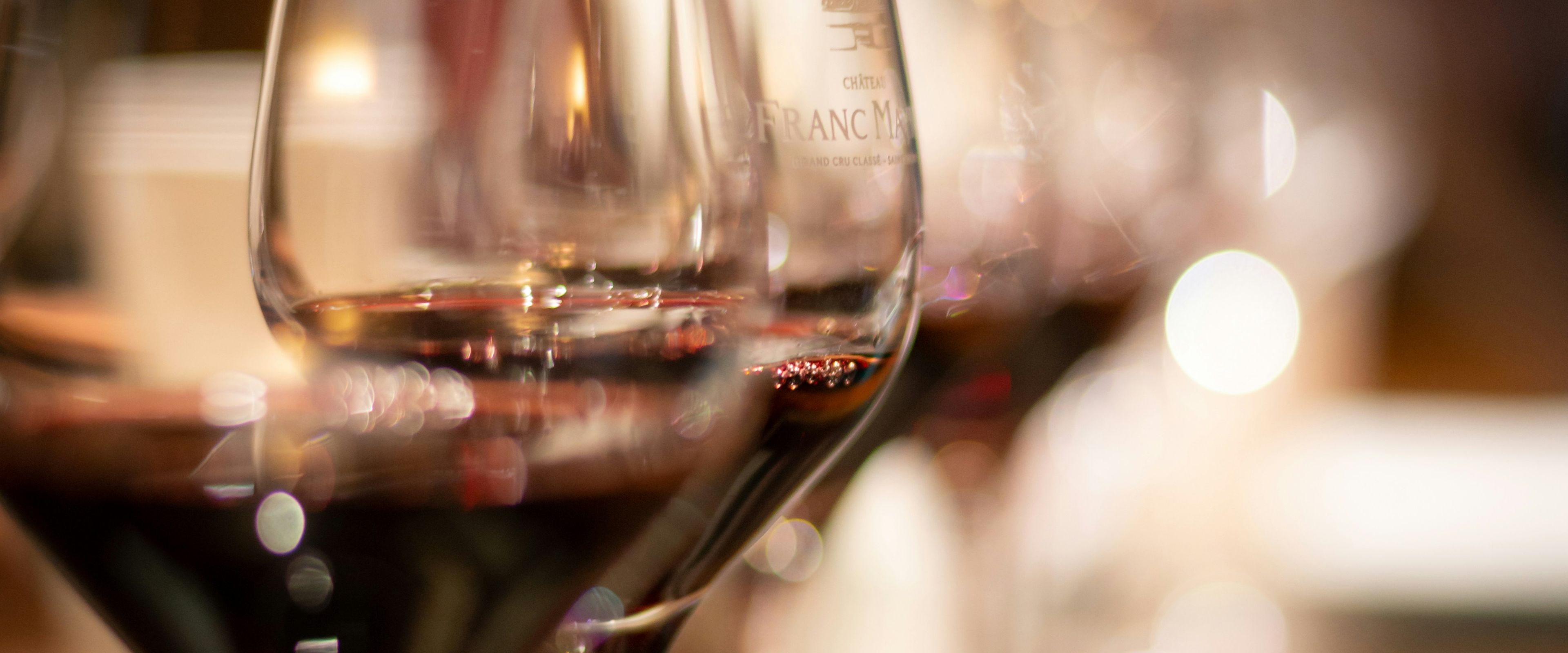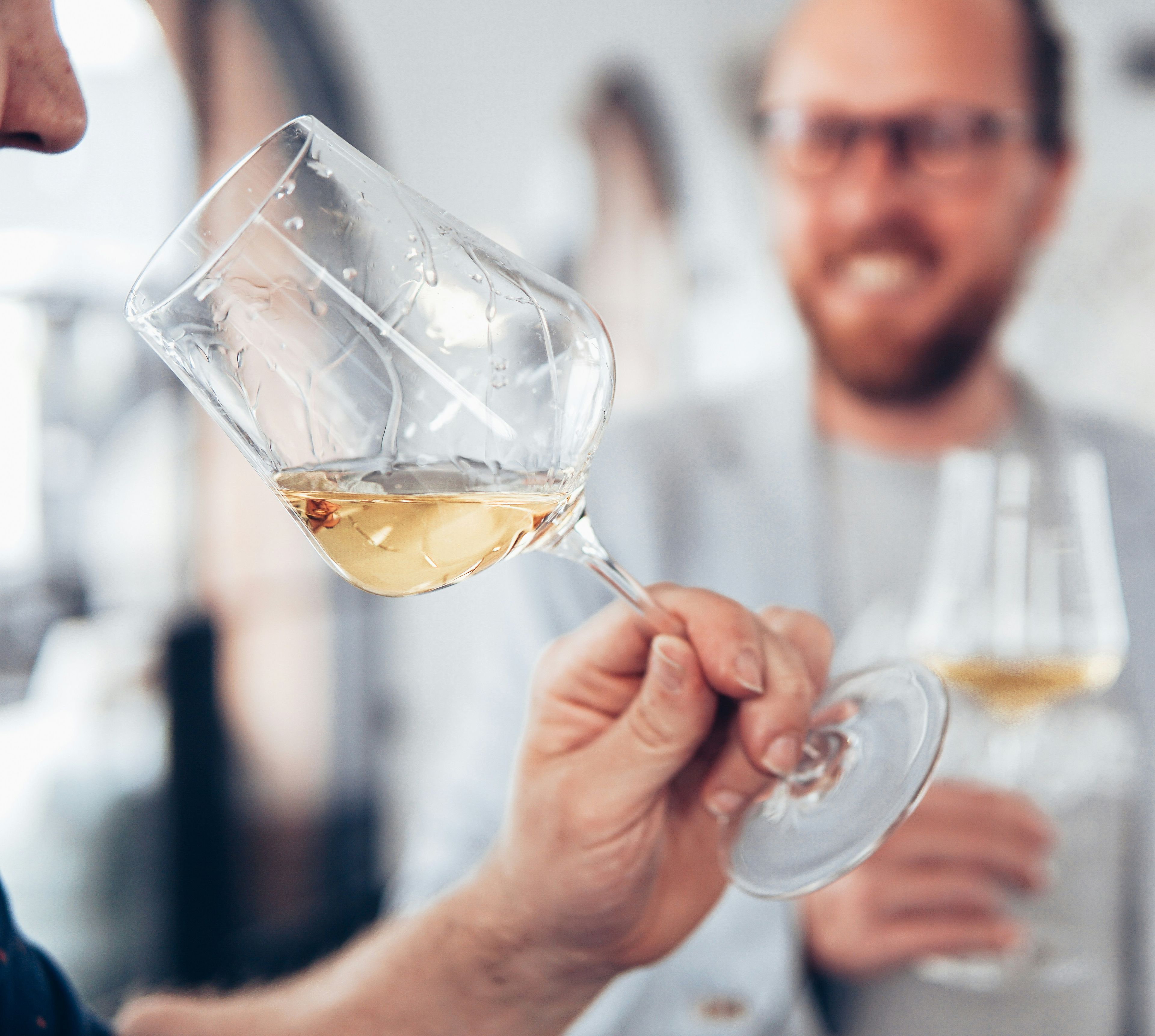
Crazy about wine
How to make your own wine tasting
You can easily have a wine tasting at home
Many people may associate having a wine tasting with a professional setting, organised by one or more sommeliers and with the need for a lot of expensive and technically complicated equipment. But that doesn't have to be the case. In fact, it is possible to have your own wine tasting without it having to be both cumbersome or expensive, and we would like to help you learn more about this.

Theme & wines
The most important thing about a wine tasting is undoubtedly the wines themselves, and both the types and numbers must of course be under control in advance.
When it comes to quantity, as such there is no correct quantity or min./max. number, but it goes without saying that the more bottles, the longer the tasting will take. In most cases, however, the number will be determined to a certain extent by the overall theme, which all else being equal will offer both opportunities and limitations. For example, you could say that French wines or French red wines may become a too broad topic, but Pinot noir from the different appellations in Burgundy or Barolo from ten different producers in La Morra is more manageable, and then there will be a clear common thread throughout the tasting.
If you choose a more varied theme with different wines from different countries, it is also beneficial to think about the order. Here you can build up the tasting, just as you would arrange different dishes for a dinner, i.e. start with the bubbles, go on to the light white wines, then the more fatty and complex white wines, then to the red wines, also starting with the lighter ones and ending with the dessert wines, port, etc.

Let your senses speak
Very practical, it is a good idea to consider a wine tasting as a sensory experience. Because even though theory, producers, municipalities, grapes, etc. are important, it is ultimately a matter of getting one to experience and enjoy some good wine under the right conditions.
Wine is about more than just tasting, and your eyes and nose are helpful here. Even before you take the first sip of the wine, you can keep an eye on the wine’s viscosity (texture) and colour and try to assess whether it is a strong wine and how old the wine can be. A strong wine will typically “reveal” itself in the form of fierce curtains that appear on the inside of the glass when you swirl the wine around.
You can narrow down the age of the wine by holding your glass at an angle and looking at the colour of the wine on the surface towards the inside of the glass. If the colour is bluish/purple, it is typically a younger wine (less than five years old), and if it is darker or more brown/turbid, it may be a significantly older wine.
Similarly, your nose can help assess whether it is an acidic wine (often in the form of citrus notes) or a very cask-aged wine with distinct aromatic notes of oak and vanilla. In addition, there are of course some wines with classic aromatic features, such as cherries in the Sangiovese grape or pepper in the Syrah/Shiraz grape.

Don't compromise on equipment
A wine tasting can require a lot of equipment depending on how much you want to do with it. Glasses give themselves, but which glasses? If you start with a tasting with several different wines (including sparkling wines) and do not want to change the glasses every time you change the type of wine, you will have to compromise on the type of glass and choose a glass that will be used throughout the tasting. This will typically be a so-called tasting glass or universal glass and can easily be used for champagne as well as strong Bordeaux wines on Cabernet sauvignon.
If you are looking for a decisive blind tasting, where even the type of wine is not revealed in advance, there are also black wine glasses that really put your taste and smell at work. These glasses are ideal if you want to test the theory that cold red wine can trick you into thinking it is a white wine. Conversely, if you have decided in advance that the tasting should consist exclusively of Pinot noir from Burgundy, then Burgundy glasses are obvious.
Another tool for holding a blind tasting is a so-called bottle sock/hidder. In addition to hiding the ethics on the bottle, it can also help to hide on the bottle shape, so that you don't have a biassed opinion about whether the wine is from Alsace or Burgundy.
For most professional tastings, there will be saliva buckets installed, and this can naturally have its advantages if more than 100 wines are to be tasted, regardless of whether you are in the car or not. Saliva buckets come in different sizes, but typically you want one saliva bucket per table or, if it’s a large table, enough for them to be within reach of all participants.
Of course, a good opener is also necessary, but it doesn't have to be a fancy one of its kind, and in the vast majority of cases an ordinary waiter’s opener will work brilliantly. Where it can be an advantage to use a more advanced bottle opener, it is for very old wines with fragile corks that have become too dry and started to crumble.
Preliminary work
There are a number of measures you can take to be as prepared as possible for a wine tasting. In the case of blind tasting, it is a good idea to use a fragrance set where you can train the character traits of different and typical fragrance notes in wines. In addition, reading up on the relevant grapes and areas can be fun and educational if you know the theme in advance.
But more practically, it is advantageous to know whether one or more of the wines should be decanted or oxygenated before tasting and at what temperatures the respective wines should be served. Your local wine dealer can help you with the latter, as there can be great variation, even among red and white wines, in relation to which temperature is most suitable. For example, a pinot noir from Burgundy would typically have to be served at a lower temperature (12-16 degrees) than a zinfandel from California (16-20 degrees), just as a cask-aged chardonnay should be served at least 4 degrees warmer than a vinho verde from Portugal. Similarly, the better champagnes can also be served more temperately than cava and prosecco.
Aeration and decanting also depend on the individual bottle, but typically decanting will be necessary in the case of an older wine with a risk of sedimentation. Here, a decanter goes in and filters out the sediment so that only the clean wine remains. Oxidation is about giving the wine air and is usually more relevant for younger wines, for example, if they are too young to drink. Conversely, it is not always beneficial for older wines (min. ten years) to be oxidised, as the wine can start to oxidise with too much air contact.
Aeration can take anything from one hour to four depending on the wine, and here too it makes sense to ask your wine dealer for advice. However, it is typically the tannin-rich wines such as Barolo and Ribera del Duero that need to open up a little by means of oxidation. It is also worth emphasising that aeration does not need to take place on a carafe, but can take place in any type of container (e.g. a magrethe bowl) with a wide surface. At the same time, this means that it does not help to just open the wine bottle and leave it standing, as very little air will naturally get down to the wine via the narrow opening of the bottle neck.